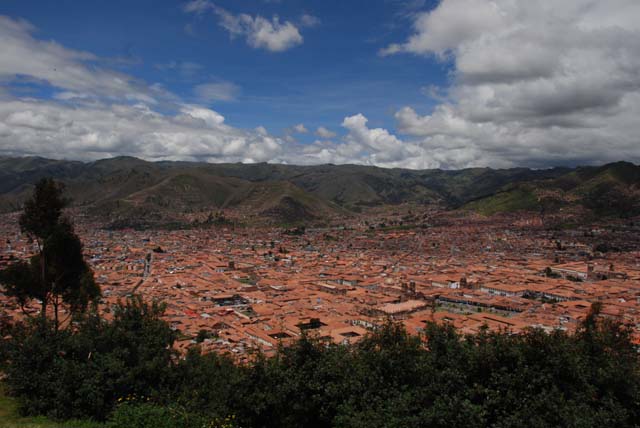
Along the Inca Road
March 25, 2011 - Cusco and the Sacred Valley
Today we flew to Cusco to begin the high-altitude portion of our trip. Lima is on the coast with an average elevation of 300 feet above sea level. Cusco's airport elevation is 11,964 feet above sea level. Needless to say our first few hours told our bodies the air was much thinner than in Lima. We did not have to do to much in terms of strenous excercise but it became apparent we were not going to be running any marathons while in Cusco.

Leaving Cusco for the Sacred Valley
The city of Cuzco, is said to be built in the shape of the puma, a sacred animal for the Incas. The head is represented by the fortress Sacsaywaman, the heart by the plaza of Huacaypata and the converging Huatanay and Tullumayo rivers represent the tail.
The Plaza Huacaypata was the heart of the puma and of Cuzco. It was in this plaza all ceremonial festivities were held. The main square of Cusco has remained in the same location since the earliest days of the Incas.
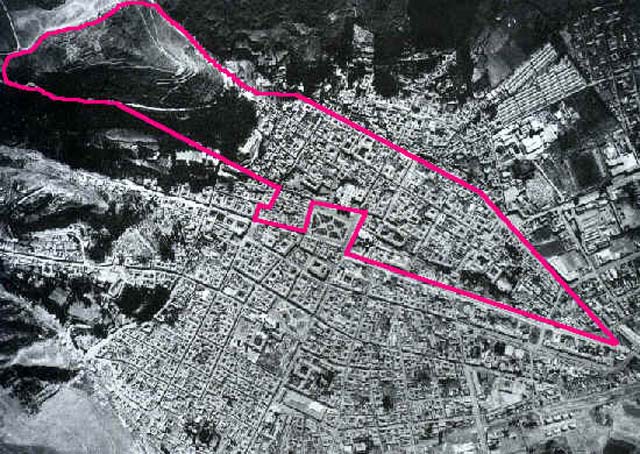 © PromPeru
© PromPeru
In 1950 an earthquake devasted the city, however, the granite walls of the Sun Temple (Korikancha) were exposed by the quake Many of the Inca walls were thought to have been lost until a 1950 earthquake devastated the city. The granite walls of the Sun Temple were exposed, as well as many walls throughout the city. After the quake many residents of the city felt the old Inca temples, walls and structures should remain exposed as a testament to the city's past. Fortunately they won the battle and today Cusco's charm is in its mixture of old and new.

Cusco sits in a valley. While the city was the capital of the Incal Empire it was the Killke culture that intially settled the area around 900 AD.
After departing the airport we headed northwest towards the Sacred Valley. Our first stop, though, was an alpaca factory where we were given a quick course in how to identify real alpaca wool from "maybe alpaca" wool. Samples of llama, sheep and alpaca wool were placed in our hands and at once it became obvious which was alpaca and which wasn't. While this brief excercise did not make us instant experts on wool and yarn it would help later on as we visited markets and stores while in the Sacred Valley.
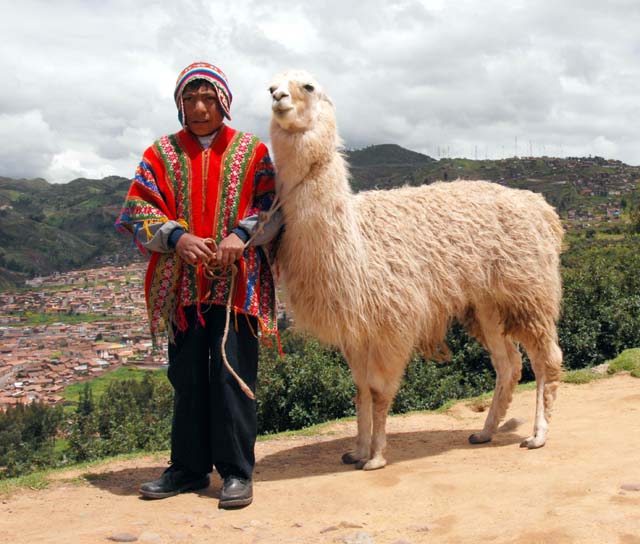
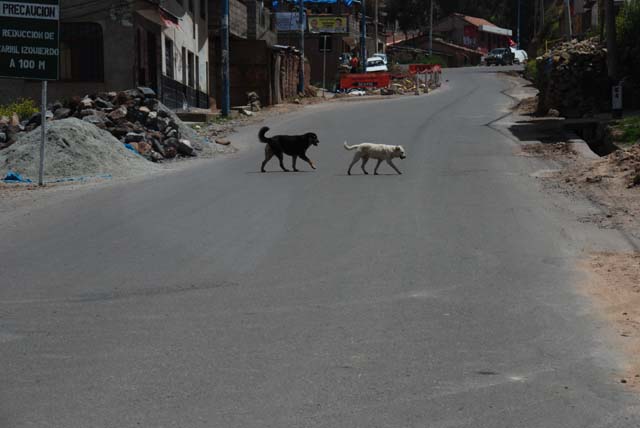
A boy and his llama. The cost for the photo op? S$1 (one solis). The dogs of Peru (this I will cover in another section. Be prepared to see lots of dog images.)
The further we drove from Cusco the higher we climbed in elevation. Every curve on the highway revealed a vista that was spectacular and each view got better and better. Eventually we stopped for lunch at a Llama ranch where we had a chance to mingle with llamas and alpacas. There were guanacos at the ranch but they were kept in separate area. Guanacos are the wild cousin of the llama and alpaca. All are members of the cameloid family and have the Joe Camel face.
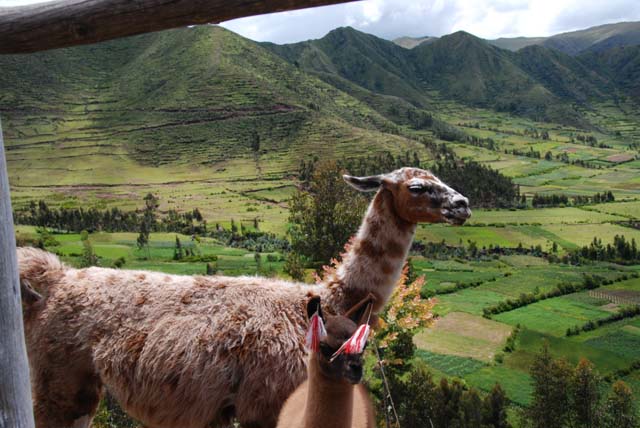
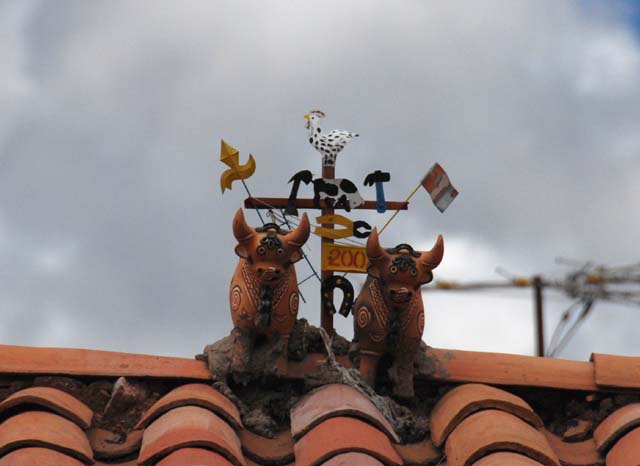
A mother and her calf. The colored tassles on the ears indicate who the owner is. The bulls adorne the roofs of many homes are are used as sign of prosperity.
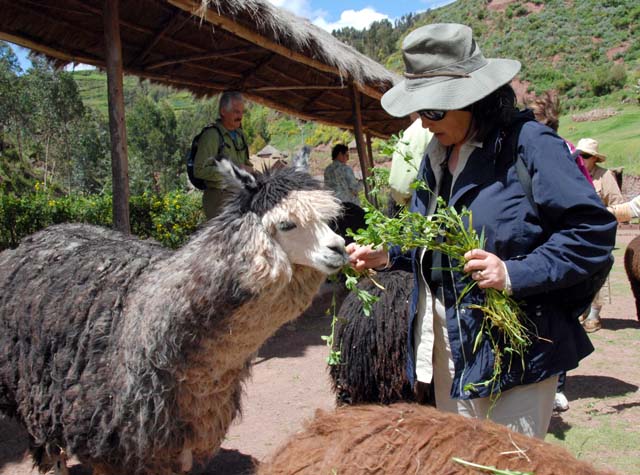
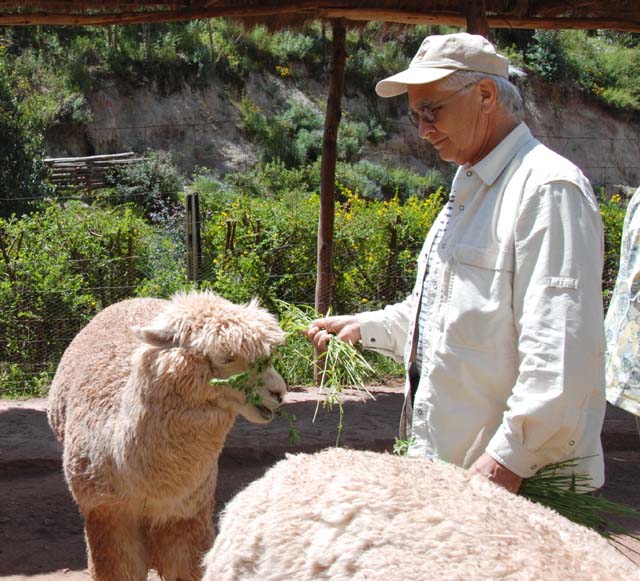
Feeding llamas at the llama ranch.
From the llama ranch we proceeded further into the Sacred Valley, gain elevation at every hairpin turn. Evenually we crossed the Vilcanota River and began a long and slow climb up a valley to an Inca site above the town of Pisaq.
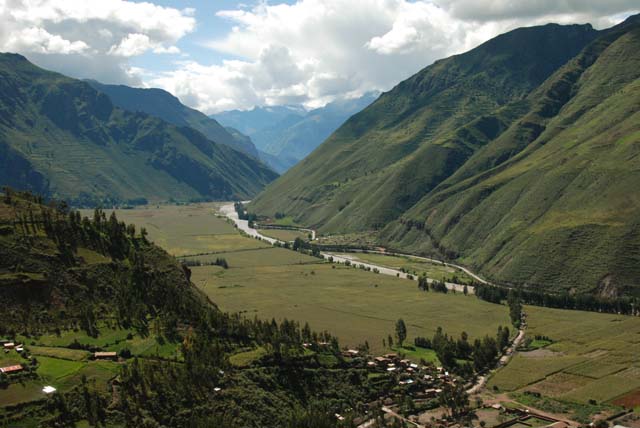
The Sacred Valley. It's hard to imagine that just a few days earlier we were over 1100 miles down river from where this river eventually turns into the Amazon River.
The Pisaq settlement is a pre-Columbian settlemet located over 2,000 feet above the valley floor. It covers several mountain sides with broad terraces, buildings hundreds of tombs located on a cliff. The tombs have long since been looted but the terraces and watch towers that were used for defense still stand. During our afternoon visit children were walking up from the town of Pisaq to their homes further up the mountain. Here is where the altitude began to hit some of us.
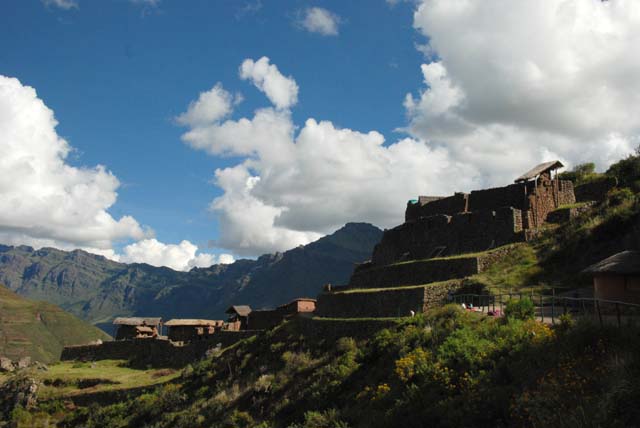
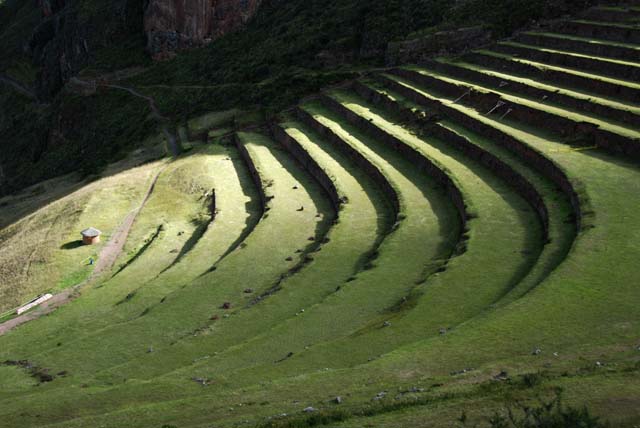
The terraces and buidlings of Pisaq. The terraces cover every possible space on the mountainsides where crops could be grown.

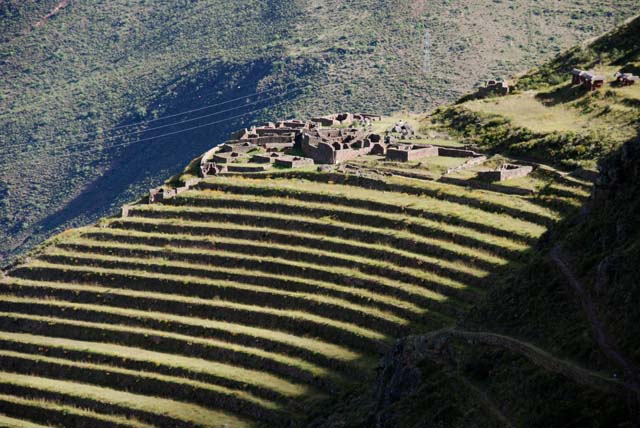
It's difficult to comprehend how much work it took to quarry these stones and carry them up the mountain and then create such beautiful and functional works. The terraces reveal the early inhabitants of the valley know much about
cultivating crops as has been envisioned.
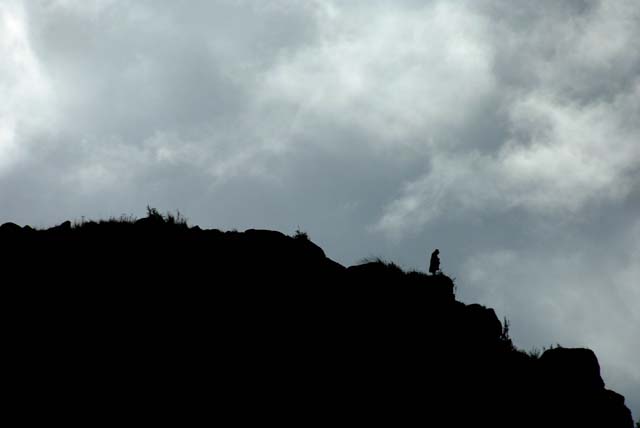
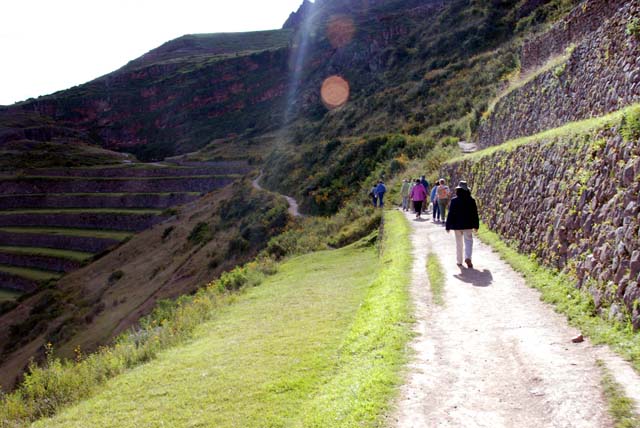
A classic scene in Pisaq. Walking towards the tombs on the mountainside.
After walking around the area we decended down to the town to walk around the local market. As is the case with all small towns in Peru, the market is where one can find all sorts of handicrafts and souvenirs. As for those great shots of Peruvians dressed in their colorful outfits or with a cute lamb or llama, the going price is one S$ or $.36 US per photo.


Simple weaving tools are used to create beautiful works of art.
By now we were ready to hit the sack and the lodge we would be staying was still one hour away by bus. So, after herding all the wayward travelers back onto the bus we proceeded in the dark to the Hantun Wasi Sacred Valley Hotel, our home for the next two nights.
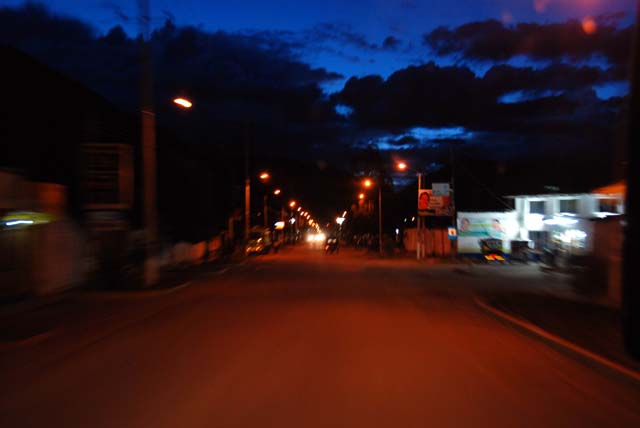
The last mile or so seemed to be the longest.
Tomorrow would be a non-stop day with river rafting and exploring the fortress of Ollantaytambo and also having a meal with a local family. It was dark when we pulled into the hotel. Everyone was tired and Joan was feeling the effects of elevation. She had a light dinner of soup and hit the sack early while the rest of us enjoyed a more robust dinner.
Mañana would be another day.
More Galván Trips & Travel Posts
Copyright 2011 Anthony Galván III